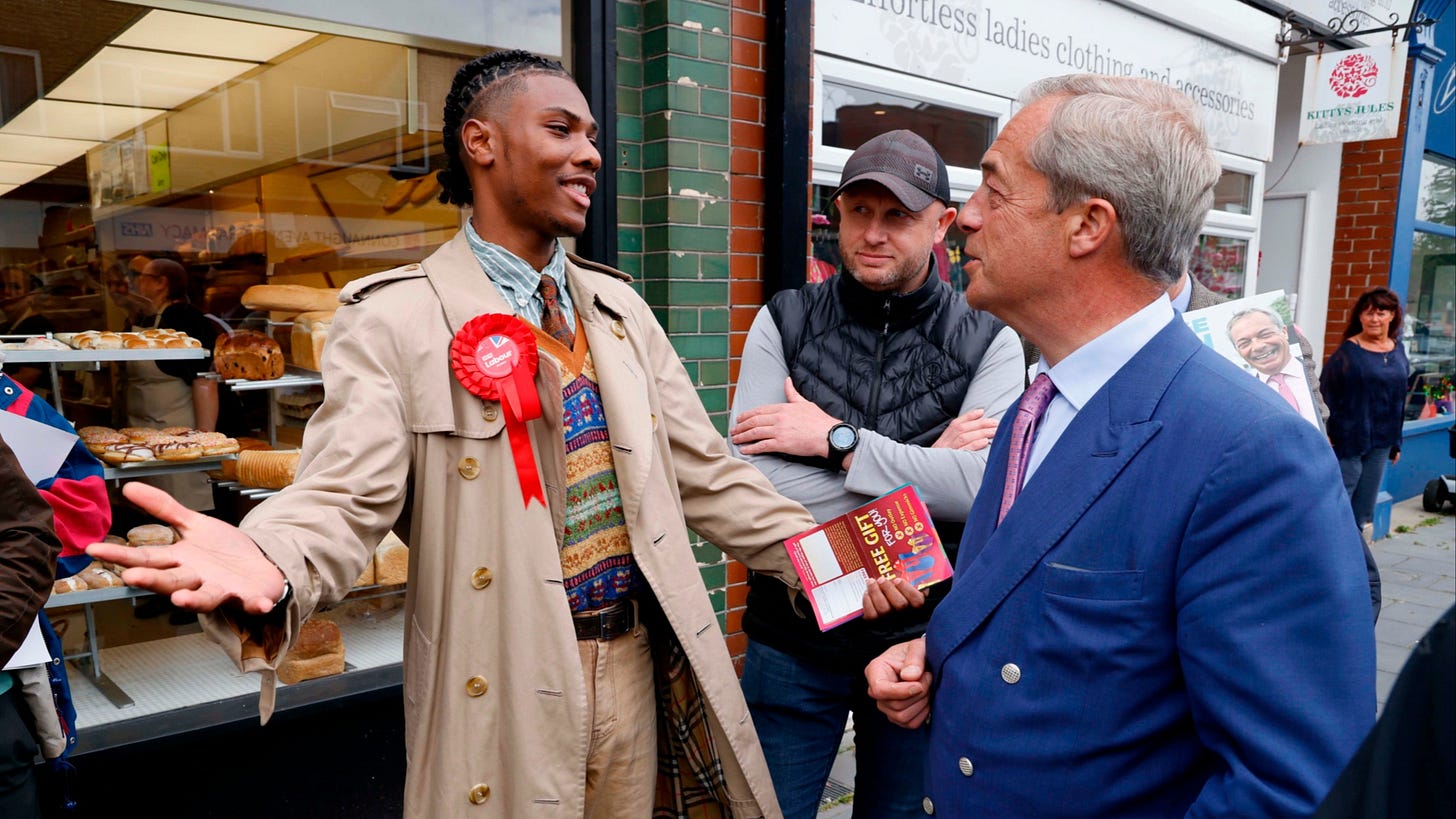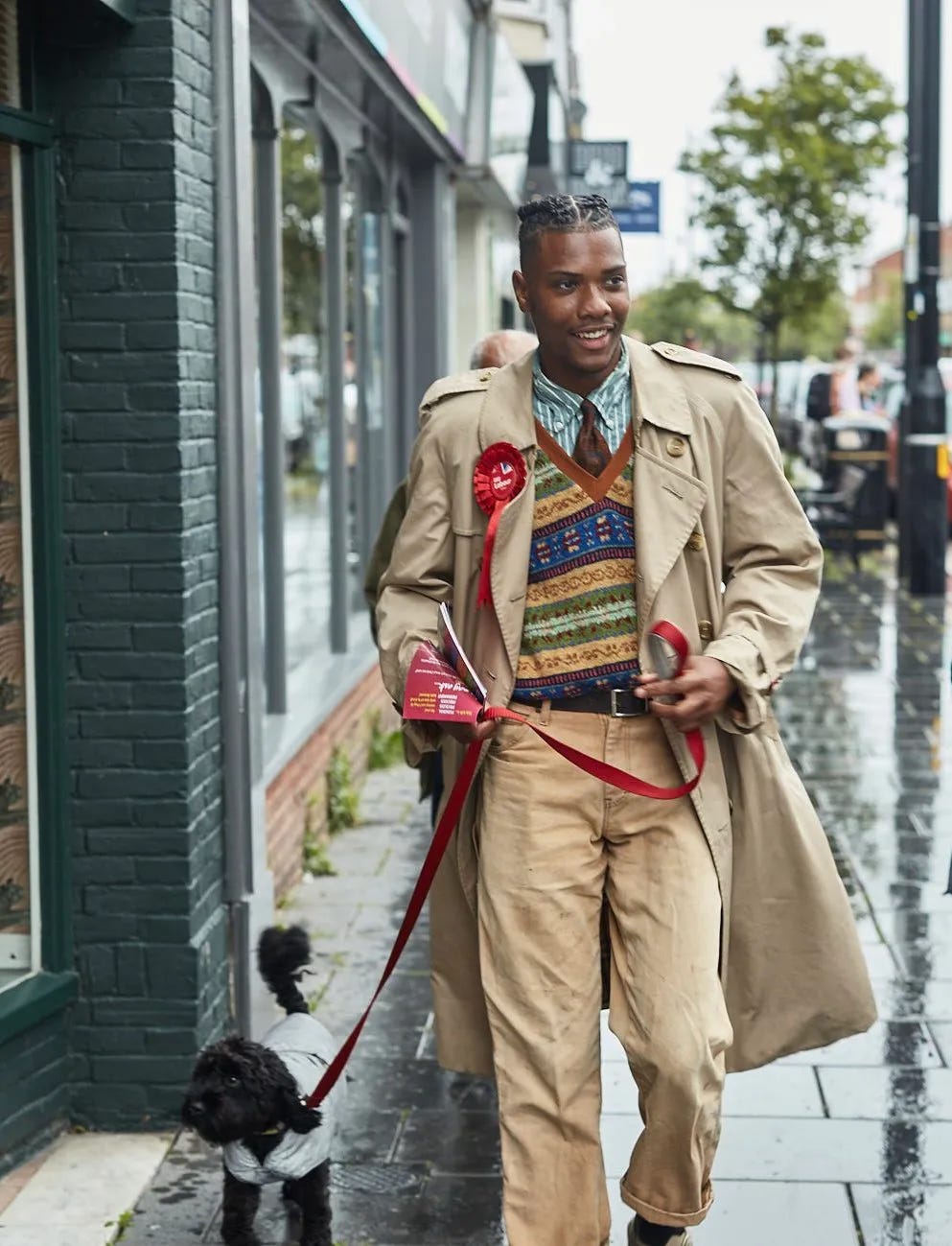“If clothes, hair and shoes can be used to make political statements—as campaign workers, civil rights activists and feminist thought leaders all clearly have done—it stands to reason that we ought to consider more closely how these things impact presidential leadership,” writes Professor David O’Connell in the introduction to a White House Studies journal article entitled, “Chief Of Style: Personal Appearance And Presidential Style.”
I’ve been thinking a lot about the topic of presidential style lately, but not in the ways it’s typically discussed. We all know JFK was an Ivy-lord, Carter had a thing for cardigans, Reagan loved him some western wear, and that Brooks Brothers has dressed at least 40 presidents. Instead, I’ve been thinking about that de facto uniform of the presidency, the suit, and wondering what could finally break its chokehold on the Oval Office. Because while our hyper-casual approach to dressing, with its prevailing “why not?" attitude, has permeated all corners of our lives, both formal and in-formal, the White House has thus far been immune. Sure, all presidents have been photographed in off-duty fits, some better than others, but when it comes to the day job, chief executives veer from the script at their own peril.
That was true back in March, when President Biden and former Presidents Barack Obama and Bill Clinton showed up for a taping of the “SmartLess” podcast, still in their go-to suits, but sans ties. This minor nod to informality, during a time when no one seems to know if ties are dead or not—so why not lose them—was greeted as further evidence of the collapse of the American experiment. Here was Guy Trebay’s take in the Times:
“Were we once again at the precipice, as some commentators seemed to suggest? Was civilization nearing its end? Or were we yet again being reminded of the inexorable march from casual Friday to casual everyday, and to a world in which chief executives dress like field hands and the only people who can be relied on to sport a suit and tie outside a courtroom are bodyguards and limo chauffeurs?”
Jesus.
For any mere mortal, dropping the tie for a podcast recording would have been the obvious choice—had you somehow decided to wear a suit to a podcast recording in the first place. But what passes as common sense behavior amongst the electorate is not a luxury that’s afforded our leaders. At least we haven’t cornered the market on pearl clutching. Look at what happened when former British Prime Minister Rishi Sunak wore a pair of Adidas Sambas during an interview last spring. Sunak, a fairly young guy wearing one of the most popular sneakers in the world, was widely mocked, with the Times proclaiming that he singlehandedly killed the style (not Trebay this time).
As far as I can tell, there’s no rule or official code that dictates what presidents must wear, although they do set the tone for what’s permissible for White House staff. Why presidents choose to wear suits is pretty obvious: suits convey power, authority, stability, and confidence, all things you want in a president. That’s why I’m guessing that when you think of the word “presidential,” the image of a man in a grey or navy suit pops into your head. But what if the president isn’t a man? We’re getting a real-time look at the potential answer with the candidacy of Vice President Kamala Harris.
Harris, unlike politicians such as Senator Kyrsten Sinema or Senator John Fetterman, hasn’t cultivated a signature personal style, but according to Business of Fashion, there’s a very strategic reason for that.
“It’s possible that Harris, a lawyer by profession, simply prefers pantsuits, neatly blown-out tresses and light, feminine makeup. But as the first Black and South Asian woman aspiring to the presidency, she’d have to weigh carefully how to express herself even if she wanted to, said Crystal deGregory, director of the Bethune Institute for the Study of Women and Girls.”
So while a Harris presidency would be historic in several ways, we still might end up with a president in a suit. What I also find ironic about this tradition is that it seems to violate “voter-politician congruence.” According to political scientists Julian Aichholzer and Johanna Willmann, voters look for clues about a politician’s relatability via their image, such as when voters expressed that they thought George W. Bush was the kind of guy they could have a beer with. If voters seem to prize presidents who look like them, talk like them, and act like them, why don’t they want their presidents to dress like them?
“I think people want personality in their politicians,” Jovan Owusu-Nepaul told me. “I mean, that's why people like Trump and Farage and others over here do so well. It's because they do have a personality. But why can't that personality at times be expressed in clothing?”
Owusu-Nepaul recently ran for British Parliament as the Labour candidate in Clacton against none other than Mr. Brexit himself, Nigel Farage. As the story goes, when he decided to run he realized that he didn’t have a suit—nor did he want to wear one—so instead he pulled from his closet of thrift store finds, and suddenly found himself being profiled by GQ and labeled “the best dressed man in politics.”
”I mean, it's baffling to me, if I'm honest,” Owusu-Nepaul said of the focus on his wardrobe, which he noted is just how he’s always dressed. The Burberry trench and Fair Isle knitwear weren’t strategic moves but they did allow him to let his authentic self come through when talking about this issues, he believes. In contrast, he thinks Sunak’s “Samba-gate” was the result of the inauthenticity of sartorial pandering.
Owusu-Nepaul also believes there’s a generational divide in what constitutes acceptable political dress as younger voters possess a different set of criteria for their politicians. “People want innovation. People want creativity. People want forward thinking. People want—I think they want individuality,” he says.
Clearly, Owusu-Nepaul offers a vision of where politicians, and their clothes, are headed. So I asked him to imagine the conditions under which the suit enters its lame duck phase. “I would hope that in the future, if I'm honest, I would love people to be more individual. How does professionalism manifest for them as an individual, and how does their respect for their constituents and the job manifest in the clothes that they're wearing? I don't think it, strictly speaking, has to be a suit.”







